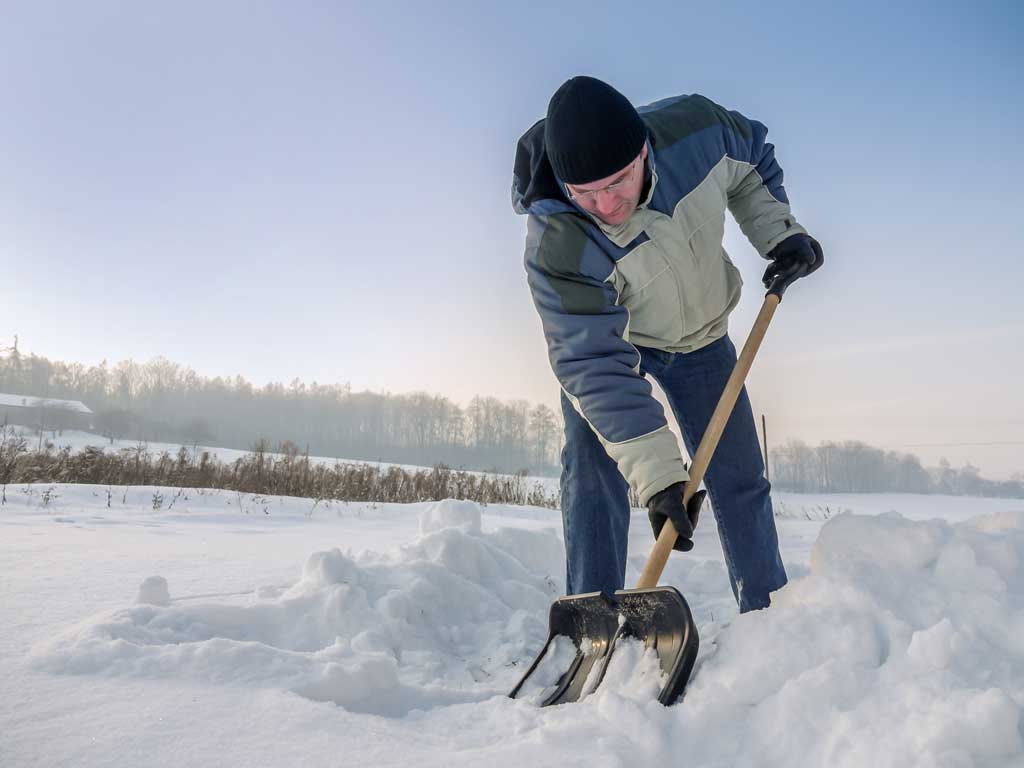
Oklahomans experience generally mild winters, but we’re no stranger to sudden snowfalls, paralyzing ice storms and frigid temperatures. Before braving the outdoors, take note of cold weather threats.
Heart Conditions
“The classic example [for heart attacks], as seen on many movies, is the person shoveling the snow and subsequently gripping their chest and falling to the ground,” says Alisa Cross, a trauma surgeon at the University of Oklahoma Medical Center in Oklahoma City. “Although those events are dramatized for entertainment purposes, the heart does have to work harder in cold weather.”
Cold weather causes arteries to constrict so a person can conserve heat, which makes the heart work harder to pump blood throughout the body.
“In addition, the oxygen supply to the heart is not as balanced as in warmer weather,” Cross says. “Strenuous activity increases the oxygen needed by the heart and makes the heart work harder to supply all of the tissues with oxygen-rich blood.”
Overexertion by a person with an existing heart disease could lead to chest pain and heart attack.
Frosty Air
For individuals with asthma and other chronic lung diseases, cold air can cause distress.
“The biggest problem with cold air breathing is it can be an irritant to the lungs and airways, leading to inflammation and narrowing of the airways from bronchospasm, a tightening of the airways,” says G. Aaron Hightower, a family medicine physician with St. John Clinic in Bartlesville. “Cold air is similar to any other irritant – such as smoke, environmental allergies, fumes – in that when the lungs and airways come in contact with the irritant, the lungs try to protect themselves by limiting the irritant [bronchospasm] and sending immune cells to the site of irritation [inflammation].”
Cross recommends wearing a scarf over your nose and mouth to warm the air you breathe and suggests taking airway medications proactively, limiting time outdoors and recognizing the signs of labored breathing, such as wheezing, worsening cough and shortness of breath.
Frostbite
“Frostbite is the resulting damage to body tissue after a freezing injury,” Hightower says. “Early warning signs prior to tissue damage have been referred to as ‘frostnip,’ which includes redness, numbness, tingling and pain.”
Commonly affected are body parts farthest from the heart, such as fingers, toes, ears and nose. Complications can range from persistent numbness and tingling, blood clots and ongoing pain to the need for surgical removal of tissue and/or digits.
Hypothermia
Beginning symptoms of hypothermia include shivering, slurred speech and confusion, followed by drowsiness, loss of consciousness and potential death, Cross says.
“The most vulnerable populations are at risk, including the elderly,” she says. “Accidental hypothermia can occur from residing in poorly heated homes or being exposed to the environment. Most people with hypothermia, especially as it progresses, are not aware of the problem because they get increasingly confused.”
Treatment for mild hypothermia, which is the most common form, includes getting the person out of the cold environment, removing moist clothing and passive rewarming by dry blankets, clothing and hats.
























